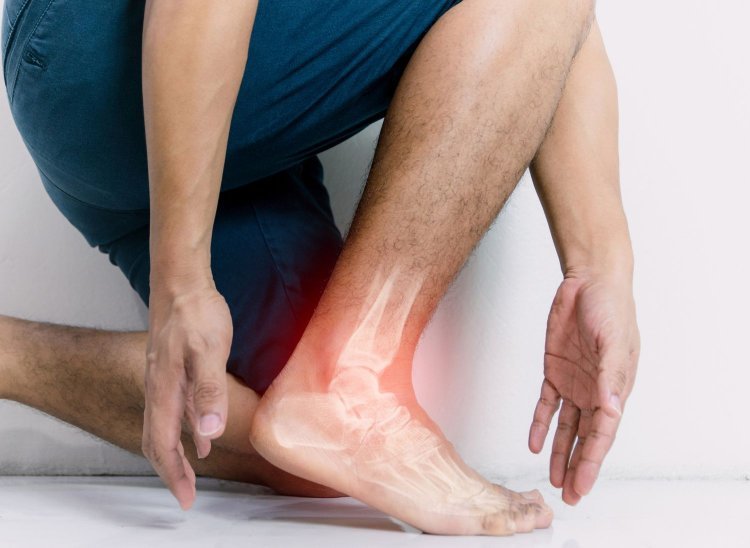Managing Foot, Ankle, and Knee Pain in the Elderly: A Comprehensive Approach
Managing Foot, Ankle, and Knee Pain in the Elderly: A Comprehensive Approach

Foot, ankle, and knee pain are common ailments, especially among the elderly. As we age, our bodies undergo various changes that can lead to pain and discomfort in these key joints. At The Vascular & Interventional Centre (sgvascularctr), we understand the impact of these conditions and provide holistic care to help alleviate symptoms and improve quality of life. This article explores the causes of foot ankle pain, and knee pain in the elderly, treatment options, and preventive measures to manage these conditions effectively.
Understanding Foot and Ankle Pain in the Elderly
Foot and ankle pain is prevalent among older adults, affecting mobility and independence. The pain can stem from a variety of causes, including:
Common Causes of Foot and Ankle Pain
- Osteoarthritis: The wear and tear of cartilage can cause inflammation and pain in the joints.
- Plantar Fasciitis: This condition involves inflammation of the tissue on the bottom of the foot, causing sharp pain, especially with the first steps in the morning.
- Bunions and Hammertoes: Deformities in the toes or foot structure can lead to pain and difficulty walking.
- Poor Circulation: Vascular issues, such as peripheral artery disease (PAD), can affect blood flow to the feet, causing pain, cramping, and even ulcers.
- Nerve Damage (Neuropathy): Diabetes and other conditions can lead to nerve damage, resulting in pain or a tingling sensation in the feet and ankles.
Treatment Options for Foot and Ankle Pain
At The Vascular & Interventional Centre, we offer a range of treatments, including:
- Physical Therapy: Exercises to improve strength, flexibility, and range of motion.
- Custom Orthotics: Specially designed shoe inserts to provide support and reduce strain on the feet.
- Medication: Anti-inflammatory drugs to manage pain and inflammation.
- Surgical Intervention: In severe cases, procedures such as joint replacement or tendon repair may be necessary.
Knee Pain in the Elderly: A Growing Concern
Knee pain is another widespread issue among older adults, often resulting from long-term wear and tear or sudden injury. The knee is a complex joint that bears much of the body's weight, making it susceptible to degeneration and injury over time.
Causes of Knee Pain in the Elderly
- Osteoarthritis: One of the most common causes, leading to the breakdown of cartilage, which causes pain, swelling, and stiffness.
- Rheumatoid Arthritis: An autoimmune disorder that causes inflammation and damage to the joints, including the knees.
- Meniscus Tears: These cartilage tears can occur from trauma or as part of the aging process, leading to pain and difficulty in movement.
- Bursitis: Inflammation of the fluid-filled sacs around the knee joint can lead to pain and swelling.
- Vascular Issues: Reduced blood flow due to conditions like PAD can also lead to knee pain and cramping.
Effective Treatment for Knee Pain in the Elderly
Managing knee pain elderly involves a multidisciplinary approach:
- Weight Management: Reducing excess weight can significantly lessen the strain on the knees.
- Physical Therapy: Targeted exercises can strengthen muscles around the knee, improving function and reducing pain.
- Injections: Corticosteroid or hyaluronic acid injections can help alleviate inflammation and lubricate the joint.
- Surgical Solutions: In severe cases, knee replacement surgery can provide long-lasting relief and restore mobility.
Prevention and Lifestyle Adjustments
While treatment options are effective, preventing foot, ankle, and knee pain in the elderly is equally important. Some key lifestyle adjustments include:
- Regular Exercise: Low-impact activities such as walking, swimming, or cycling can help maintain joint health and flexibility.
- Healthy Diet: A balanced diet rich in calcium, vitamin D, and anti-inflammatory foods can support bone and joint health.
- Proper Footwear: Shoes with good arch support and cushioning can prevent unnecessary strain on the feet and ankles.
- Vascular Health: Maintaining good vascular health through regular checkups can prevent circulation-related issues that contribute to joint pain.
Conclusion: Looking Ahead to a Pain-Free Future
Foot, ankle, and knee pain in the elderly are challenges that can significantly impact daily life. However, with a combination of proper care, targeted treatments, and preventive measures, it is possible to manage and even alleviate these pains. At The Vascular & Interventional Centre, our team of expert vascular surgeons and specialists is dedicated to providing comprehensive care, focusing on both vascular and orthopedic issues, to improve mobility and overall well-being for our elderly patients.
As we look to the future, advancements in medical treatments and technology continue to offer new hope for those suffering from chronic pain. Whether through innovative therapies, surgical solutions, or simple lifestyle changes, the path to a more active, pain-free life is achievable.
What's Your Reaction?












